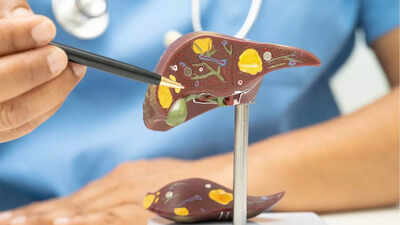ARTICLE AD BOX

A new study by researchers from Keck Medicine of the University of Southern California has revealed that exposure to tetrachloroethylene (PCE), a chemical widely used in dry cleaning and commonly found in household products such as craft adhesives, spot cleaners and stainless steel polish, can triple the risk of developing significant liver fibrosis.
This condition, which involves severe scarring of the liver, can progress to liver cancer, liver failure or death. The study also found that the more PCE present in the bloodstream, the greater the chance of liver damage, even in people without traditional risk factors like alcohol use, obesity or hepatitis.
What is PCE and how it can damage liver
PCE is a synthetic, colourless solvent used industrially to remove grease and stains. Most people encounter it through dry-cleaned clothing, where the chemical can slowly release into the air over time.
It can also seep into soil and groundwater through factory waste or improper disposal, making drinking water another potential source of exposure.The International Agency for Research on Cancer classifies PCE as a probable human carcinogen linked to bladder cancer, non-Hodgkin lymphoma and multiple myeloma. Previous research has also suggested an increased risk of liver cancer.Using data from the National Health and Nutrition Examination Survey (NHANES) covering adults aged 20 and above between 2017 and 2020, researchers found that around 7% of the population had detectable levels of PCE in their blood.
Those with measurable exposure were found to be three times more likely to have significant liver fibrosis compared to those without exposure.This association remained consistent regardless of age, ethnicity, sex, income level or underlying health conditions. Traditional causes of liver disease such as heavy drinking or fatty liver related to obesity did not appear to be required for liver damage when PCE exposure was present.
Who is at greater risk?
The study noted that individuals from higher-income households were more likely to be exposed, likely due to greater use of dry cleaning services. Workers in dry cleaning facilities may face even higher exposure levels due to prolonged, direct contact.However, anyone who uses household products containing PCE, or lives near contaminated water sources, may also be at risk.Many people diagnosed with liver disease are confused when they have no history of alcohol misuse or metabolic conditions.
This research highlights environmental exposure as a largely overlooked factor. It suggests that liver screening may need to include questions about workplace and household chemical contact.
Regulatory action and the road ahead
Due to increasing safety concerns, the United States Environmental Protection Agency has begun a 10-year phaseout of PCE in dry cleaning and has placed restrictions on its use in industrial settings. However, the chemical remains in use in some products and in regions without similar regulations.Researchers emphasise the need for greater public awareness and further investigation into other common environmental toxins. Early screening for individuals with known exposure may offer a better chance of preventing irreversible liver damage.Note: The information provided in this article is for educational purposes only and is not intended as medical advice. Always consult with a qualified healthcare professional before starting any new medication or treatment and before changing your diet or supplement regimen.

 3 days ago
7
3 days ago
7









 English (US) ·
English (US) ·